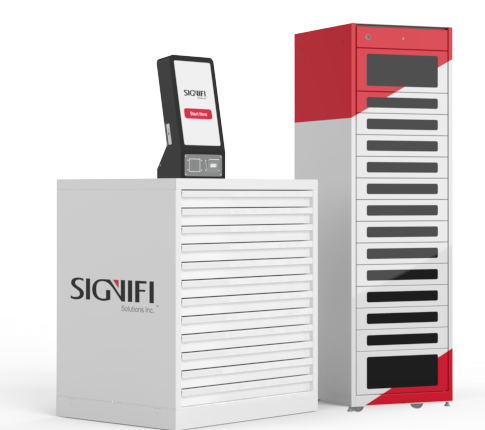Here at Signifi we recently spoke about the benefits that IT asset lifecycle management can deliver for an organization, including increasing productivity by clearing out old tech to make way for the new.
Now let’s talk about the need to collect the old tech in a comprehensive and responsible way. Just 17.4% of e-waste is recycled globally, according to United Nations University. There’s obviously plenty of room for improvement.
There are also plenty of reasons to improve that stat: Not only is lifecycle management for old IT assets a responsible way for an organization to handle waste, it’s a strategic move that can bolster your environmental, social and governance (ESG) goals, foster a culture of sustainability, and prepare you for a fast-approaching future in which recycling e-waste will not only be the norm for organizations, but a profitable choice too.
Read on to learn more.
1. Old devices still have some recoverable value
According to the Boston Consulting Group (BCG), some USD 10-billion worth of e-waste, “comprising computer equipment and devices, screens, and small electronic appliances” gets tossed out in the United States alone each year.
Most of the value of the e-waste lies in the embedded metals, including copper, gold, silver, platinum, and palladium, which is lost when the items end up in a landfill. According to Ernst & Young (EY), “a company can recover over 100 times more gold from one ton of mobile phones than traditionally mining one ton of gold ore.”
The inherent value of e-waste is motivating large and influential organizations such as Google, Microsoft, Dell, etc. to take the lead on creating a circular economy for electronic items. This is driving the creation of an e-waste supply chain, or “reverse supply chain,” that will recycle old technology to create new value. Lenovo, for example, already offers an asset recovery service that delivers credit back to organizations in exchange for the value of their discarded tech assets. Expect more IT asset recovery options to appear in the years ahead — Dell, Microsoft and Google have created a partnership that promises to create a supply chain to feed a circular economy in e-waste by 2030.
2. IT lifecycle asset management improves environmental (and ESG) performance
Discarded tech often contains harmful metals including cadmium, mercury and lead, which can leach from dumps and end up in groundwater, contaminating water sources used by people and livestock. This creates a risk of exposure to toxic metals for the entire population.
That’s why proper disposal of e-waste has become a consideration for companies that have ambitious environmental, social, and governance (ESG) goals. Companies with a strong focus on ESG are continually striving to minimize their environmental impact and promote sustainable practices. A convenient e-waste collection system serves as a crucial component in their ESG strategy by ensuring the responsible disposal and recycling of electronic waste.
“A shift toward circular economy models,” says Ernst & Young, “can help companies not only access untapped financial and business opportunities but also lower their overall environmental impact.”
3. Improperly discarded electronic waste is a security risk
E-waste can also present a security risk if not dealt with properly. Carelessly dumping electronic items like laptops, memory sticks, physical security keys, hard drives and servers can expose an organization to data security breaches. This can be costly in terms of fines, loss of reputation, and exposure to further security breaches.
In short, by providing employees with designated collection points for their old electronics, businesses can divert electronic waste away from landfills, demonstrate their commitment to sustainable practices, and avoid the security risks that come with losing track of old assets.
Solutions for implementing IT asset lifecycle management
We've talked about an entire eco-system to recycle e-waste but the starting point of it all is individual convenience and habits. The most amount of e-waste is generated in workplaces, and setting up a system for e-waste collection for employees is high priority. This system will obviously work best if it’s convenient to use.
Signifi’s integrated, flexible, turnkey platform for hardware asset management provides complete holistic management for asset lifecycle for all of your organization’s hardware assets. Organizations can use smart lockers to set up processes that allow employees to return high-value devices such as laptops and cellphones that are no longer needed or require replacing.
Now we offer another option, which is especially well-suited to lower-value items: the E-Waste Bin. Sporting a clean, modern look that takes up a small footprint within your office, the E-Waste Bin has been designed as a simple receptacle for employees to recycle their electronic accessories. Items such as keyboards, mice, cables, power cords, power supplies etc. can be safely disposed off in this bin. As an optional extra, sensors can be mounted to track the number of products collected, and the unit will deliver a notification when it’s full.
An e-waste collection system can be this easy — for your end-user employees and your IT department.
Get in touch with us to discover how e-waste could be a part of your comprehensive IT asset lifecycle management strategy.

.png)

